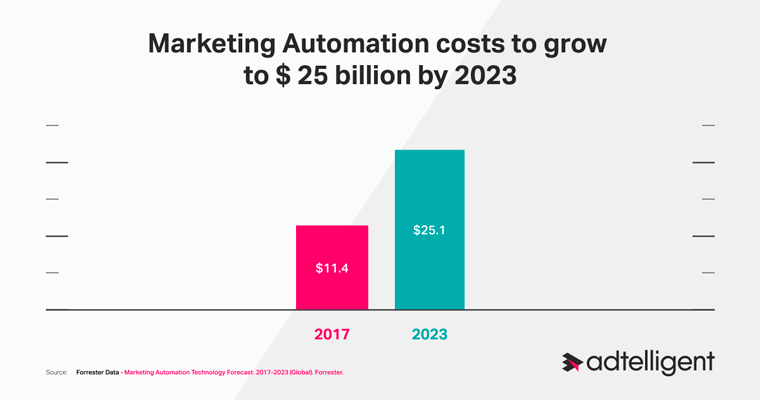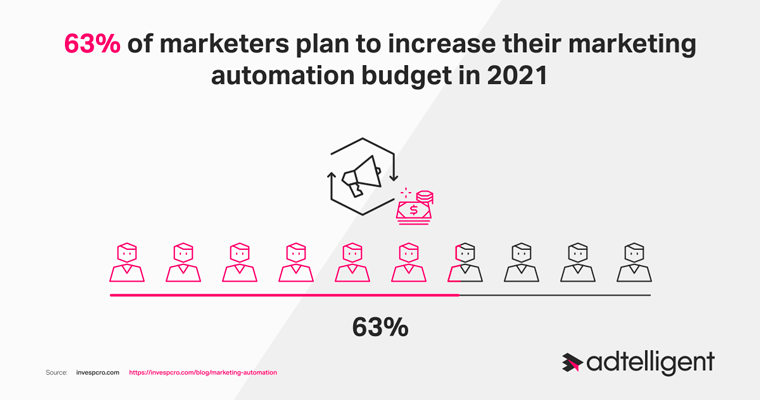Marketing in the digital age is a fast-paced and demanding industry. As a result, marketers are always on the lookout for ways to stay ahead. Ad tech innovations such as real-time bidding, programmatic advertising, and analytics have upped the stakes of the competition, but how can they be leveraged to their full potential?
That’s where the concept of cyborg marketing comes in handy.
Why Cyborg?
When we think about cyborgs, the typical image that comes to mind is a hybrid of human and machine. Augmented creatures with technologically advanced parts and devices allow them to perform feats beyond the capacity of an average person.
But being a cyborg is not just about having biomechatronic parts – in cyborgs, the machine elements are integrated on the equally basic level as the organic ones. Thus, the machine side is not a separate or inferior element to the human side, nor can it function by itself. Instead, both parts build on each other to create something that operates on a whole different level.
What does this mean for marketing?
Instead of speaking in sci-fi references, let’s cut to the chase: marketing fundamentally draws upon the governing principle of cybernetics, which is feedback.
Feedback refers to information about the response of a system to a specific input. When marketers think about feedback, they often mean survey results or conversion rates, among other things. Therefore, the best marketing strategies can respond to input in the most meaningful and timely manner.
This proves that marketing has, in a sense, always been a cyborg-like entity. But what makes this approach new is the effective use of marketing automation, from real-time analytics to execution via programmatic advertising channels.
New technologies built on AI and machine learning have given marketers access to more high-quality data in real-time than ever before. In cyborg systems, human and machine elements respond to each other in a seamless feedback loop as close to real-time as possible. This is what a cyborg approach to marketing tries to emulate.
Applications of the Cyborg Approach
Marketing automation is still a growing field, and its interactions with different marketing strategies are still being studied. It requires a visionary marketer to be able to grasp the full range of this technology’s potential here are some of the few examples:
- Worldwide Advertising
- Seasonal Marketing
- Content Marketing
- Competitor Analysis

Worldwide Advertising
A translation company, Tomedes, wrote an article about advertising translation, which involves the translation of advertisements and location and channel targeting. It can be very cost-inefficient for buyers to spend on ads for a broad region with multiple linguistic groups or on marketing channels that these groups are unlikely to respond to.
“The cost multiplies even further when more languages are involved,” says Ofer Tirosh, the CEO of Tomedes. “We often advise clients to do their research before choosing what ads they want to be translated.”
Programmatic advertising and AI-based data analytics allow marketers to do this precisely so that companies can focus on potential markets on a more granular scale. This reduces research costs, giving a campaign room to allocate more resources to its advertising translation strategy. As a result, marketers can develop diverse sets of multilingual ad content and deliver it to them where it might have the most impact.
And because the targeting is more precise, so is the feedback. Marketers will be able to measure the performance of ads in specific languages with greater accuracy.
Seasonal Advertising
Seasonal advertising seems pretty straightforward – there are times of the year when certain ads are likely to result in a higher return on investment.
But determining the correct time frame for placing these ads is not as simple as eyeing the proper calendar dates. Many marketers forget that consumers can respond to these dates in many different ways, such as buying early to avoid the crowd or buying other products days or weeks later.
With real-time data analytics, marketers will potentially act more precisely upon consumers’ seasonal behaviors in real-time mode. In addition, opportunities come and go, so responding within a tiny window can give marketers a greater chance to grab them as they come by.
Content Marketing
Content marketing isn’t a field one might intuitively link with programmatic advertising. They might seem like opposite ends of the marketing spectrum. Still, marketers have been taking note of the synergy between the two.
The ability to deliver targeted content can help draw in a more engaged audience at critical junctures. And because content marketing is focused on providing substance, this reach can translate into the more solid brand trust that an ad campaign can generate.
Competitor Analysis
Returning to the topic of competition, dealing with competitors in advertising has never been as fast-paced as it is now.
There might be days when well-crafted ad campaigns can result in heavy losses if they can’t adapt in the face of serious competition. Still, those days can soon be gone for the savvy marketers who can leverage real-time analytics and respond accordingly.
This can include an ability to reallocate resources or tap into channels neglected by the competition. Or, at worst, it can mean knowing when a complete overhaul is needed or cutting off losses to stay afloat for another day.
The quicker a marketer can respond to the challenges posed by its competitors, the greater the possibility of succeeding against them.

Cyborg Marketing: Are You Ready?
These examples are only the tip of the iceberg when it comes to the possibilities of marketing automation. As technology matures, the best marketers will find new and more creative ways to integrate it with different aspects of their marketing strategy.
The future of marketing lies in embracing automation to reach superhuman heights. And that is a future that is coming fast.